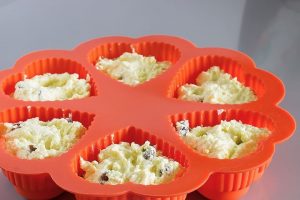You’ve probably read quite a few blog posts about the difference between silicon and silicone. But what’s so important about these two words that they must be written in big letters on their own?
Silicon refers to computer components; silicone refers specifically to materials such as rubbers, plastics, or resins.
Silicon and silicone are both materials that have a variety of applications. Silicon is a natural chemical element, while silicone is a manmade polymer. Silicon has many practical applications, while silicone has a variety of applications.
Although silicon and silicone are often used interchangeably, there are some important distinctions between the two materials. Silicon is a natural element, while silicone is a synthetic material made from silicon and other ingredients. Silicon is harder and more brittle than silicone, which is softer and more flexible. Additionally, silicone resists heat better than silicon.
Hopefully, this post will explain the differences between silicon and silicone to clear up any confusion!

What is silicon?
Silicon is a natural element in many places, including the Earth’s crust. It is a semimetal substance, which means it has some of the properties of both metals and nonmetals. As a result, silicon is used in many electronic devices, including phones and computers.
What are the applications of silicon?
- Silicon is used to make semiconductors and transistors.
- Silicon is used to make alloys that improve the resistance of metals.
- Silicon glasses are a type of glass made from large silicon crystals. They are used in laboratories as electrical insulators and piezoelectric glasses.
- Silicon is essential for making semiconductors and transistors and is also used in bricks and photovoltaic cells.
What is silicone?
Silicone is a type of manmade material that includes silicon and oxygen. Silicone materials are made in liquid, fluid, solid, or natural rubber form.
What are the applications of silicone?
- Silicone adhesive is used in a wide variety of industrial and consumer products.
- Silicone is resistant to extreme heat and cold, holds up to UV exposure, and is water-repellent.
- Silicone caulk is used in construction and home maintenance.
- It is often used to seal open areas between injection molding and drywall or flooring, as well as to seal the edges of sinks, tubs, and other bathroom fixtures.
- Silicone can coat office equipment’s exterior components, such as photocopy machines, printers, and fax machines.
- Silicone is also used in many car parts, including airbags, shock absorbers, and windshield wipers.
What is the difference between silicon vs silicone?
Although the words silicon and silicone can be used interchangeably, there are some significant differences between them. Silicon is a natural chemical element found in abundance on Earth, primarily as a major component of common sand. Silicon is generally found in a crystalline form. Silicone is a manmade substance derived from silicon and other inorganic chemistry, and it may be a liquid or a rubber-like synthetic polymer.
One major difference between silicon and silicone is their commercial use. Pure silicon is an ideal semiconductor, like the more expensive element of germanium. It is possible to heat silicon into a molten state and then form it into wafers. These semi-conductive wafers can then be used as a base for the intricate and microscopic electronic circuitry required for computer processing. This relationship between silicon and the technology industry inspired the nickname for the California high-tech region known as Silicon Valley.
Silicone, on the other hand, is used for several other industrial applications. For example, liquid silicone is often used as a lubricant for machine parts. A thicker silicone rubber can also be a waterproof sealant around windows and other gaps. In addition, cured silicone is flexible, moisture-resistant, and transparent.
Silicon and silicone are both used to create fireproof or heat-resistant products. Still, silicon is generally used to create ceramic glazes, glass, or bricks, while silicone is used to create heat-resistant kitchen aids. For example, many cooks rely on silicone-based gloves, tongs, pot holders, and pan handles to prevent burns and scalds. Silicone also possesses non-stick qualities so that it can be formed into flexible food grade silicone cookware and silicone bakeware.
Silicone is also chemically inert and considered low in toxicity for humans. This makes it an ideal material for medical prosthetics, most notably as the fluid used to fill prosthetic sacs during breast augmentation surgery. However, silicone as an alternative to saline has recently become quite controversial. Some patients have reported serious medical complications following the rupture of silicone breast implants.
In short, the difference between silicon and silicone is that silicon is a natural chemical element, while silicone is one of several manmade products derived from silicon. In addition, silicon is generally found in solid crystalline forms like sand or glass. At the same time, silicone may be a liquid lubricant, a semi-solid adhesive, or a rubber-like plastic polymer.
Silicon is the 14th element on the periodic table. It’s a metalloid, meaning it has properties of both metals and nonmetals, and is the second most abundant element in the Earth’s crust, after oxygen. Silicon readily bonds with an oxygen atom and is rarely found in nature in its pure form. Instead, you’ve likely seen silicon as silicon dioxide or crystalline silica, better known as quartz, which is the most common component of sand.
Amorphous silica also contains mineral forms, such as flint, jasper, and opal. When silicon atom and oxygen mix with reactive metals, the result is a class of minerals called silicates, which includes granite, feldspar, and mica.
Frequently asked questions
We will answer some of the most frequently asked questions about the ever-growing confusion about silicone vs silicon.
Is silicon a polymer?
Silicone is a type of plastic used by manufacturers of everyday household items. It was introduced as an alternative to other materials, such as polyethylene and polypropylene.
In short, silicone is a plastic polymer, sometimes called synthetic rubber. The ingredient silicon comes from silica, which is derived from sand.
What temperatures can silicone withstand?
Silicone products can withstand temperatures up to 400 degrees Fahrenheit.
Silicone is a material with many beneficial properties that make it useful in various industrial and consumer products. For example, silicones are heat and cold-resistant, water-repellent, and inert to many chemicals. This makes it ideal for use in products with important characteristics, such as cookware, appliances, medical devices, and more.
Is silicone an element?
Silicone is not an element. It is a compound of silicon and oxygen.
Is silicon natural?
No, silicon is not natural. Instead, silicon is a compound created by combining many elements in the Earth’s crust and making them sand or dust.
How is silicone made?
In the production of silicone, hydrocarbons and sulfur are reacted at high temperatures to form hydrogen sulfide. The H2S gas is purified through water and carbon dioxide scrubbing, and then fed into the reactor. In the reactor, the H2S reacts with silane to form a poly-silicon polymer. The poly-silicon is then heated to reduce silicon dioxide and purify the final product. The result is a silicon-based polymer used primarily for electrical insulation and heat transfer in electronics.
- The Ultimate Decluttering Checklist: The [15] things you need to get rid of - April 14, 2023
- The Best Laundry Basket & Organizer: Find the best hamper for you! - February 2, 2023
- Cooking With Silicone: Is Silicone Cookware And Bakeware Safe For Use? - August 23, 2021




